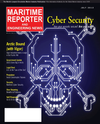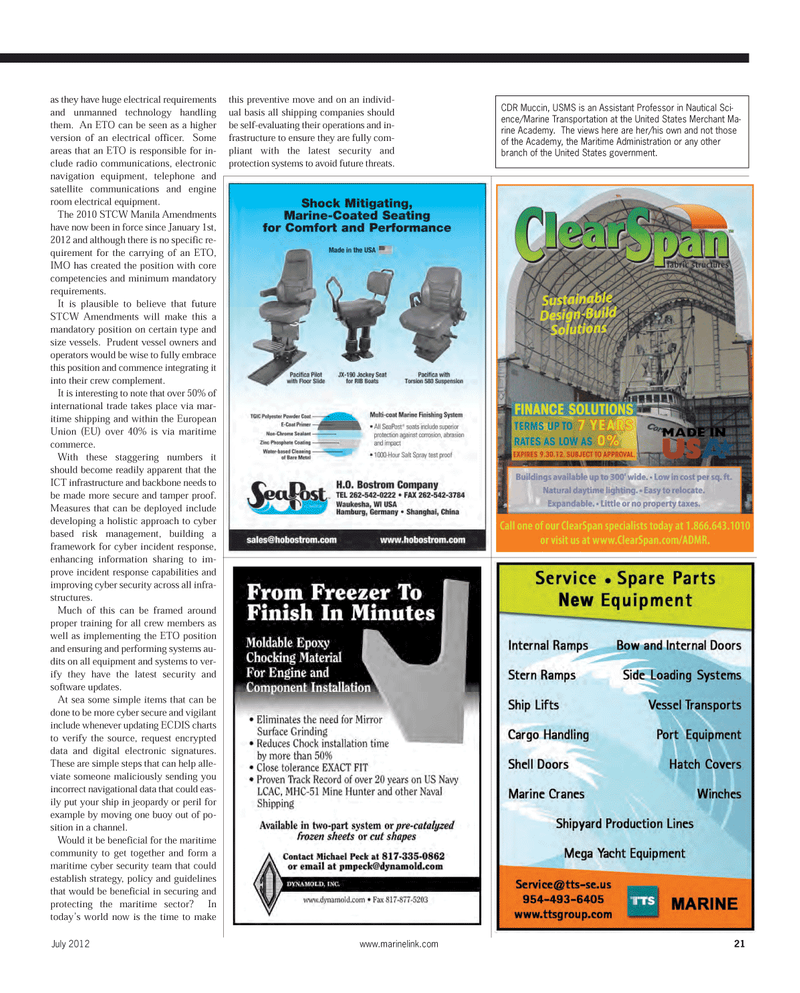
Page 21: of Maritime Reporter Magazine (July 2012)
Arctic Operations
Read this page in Pdf, Flash or Html5 edition of July 2012 Maritime Reporter Magazine
July 2012www.marinelink.com 21as they have huge electrical requirements and unmanned technology handlingthem. An ETO can be seen as a higher version of an electrical officer. Some areas that an ETO is responsible for in- clude radio communications, electronicnavigation equipment, telephone and satellite communications and engineroom electrical equipment. The 2010 STCW Manila Amendments have now been in force since January 1st, 2012 and although there is no specific re- quirement for the carrying of an ETO, IMO has created the position with corecompetencies and minimum mandatoryrequirements. It is plausible to believe that future STCW Amendments will make this a mandatory position on certain type andsize vessels. Prudent vessel owners and operators would be wise to fully embrace this position and commence integrating it into their crew complement. It is interesting to note that over 50% of international trade takes place via mar- itime shipping and within the EuropeanUnion (EU) over 40% is via maritime commerce. With these staggering numbers it should become readily apparent that theICT infrastructure and backbone needs tobe made more secure and tamper proof.Measures that can be deployed include developing a holistic approach to cyber based risk management, building a framework for cyber incident response, enhancing information sharing to im-prove incident response capabilities and improving cyber security across all infra- structures. Much of this can be framed aroundproper training for all crew members as well as implementing the ETO position and ensuring and performing systems au-dits on all equipment and systems to ver- ify they have the latest security and software updates. At sea some simple items that can bedone to be more cyber secure and vigilant include whenever updating ECDIS charts to verify the source, request encrypted data and digital electronic signatures.These are simple steps that can help alle-viate someone maliciously sending youincorrect navigational data that could eas- ily put your ship in jeopardy or peril forexample by moving one buoy out of po- sition in a channel.Would it be beneficial for the maritime community to get together and form amaritime cyber security team that could establish strategy, policy and guidelines that would be beneficial in securing and protecting the maritime sector? Intoday?s world now is the time to make this preventive move and on an individ- ual basis all shipping companies shouldbe self-evaluating their operations and in- frastructure to ensure they are fully com- pliant with the latest security andprotection systems to avoid future threats. CDR Muccin, USMS is an Assistant Professor in Nautical Sci- ence/Marine Transportation at the United States Merchant Ma- rine Academy. The views here are her/his own and not those of the Academy, the Maritime Administration or any other branch of the United States government.MR#7 (18-25):MR Template 7/6/2012 10:25 AM Page 21

 20
20

 22
22
